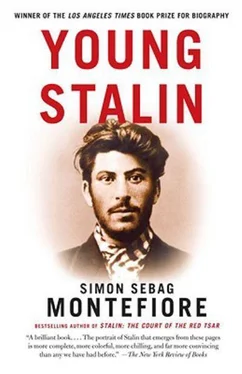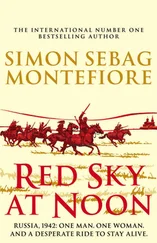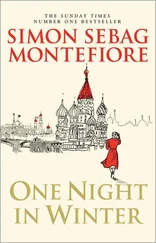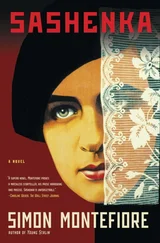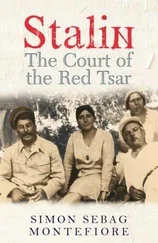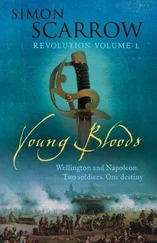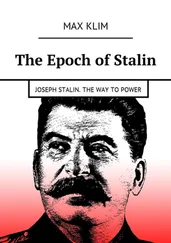Colchis, land of the Golden Fleece, was the ancient name of Georgia: hence Colchian.
Essad Bey was one of the pseudonyms of Lev Nussimbaum, the son of a Jewish Baku oil baron, who wrote Stalin: Career of a Fanatic . He also wrote the classic love story Ali and Nino under the name Kurban Said, whose identity was a mystery until a new biography— The Orientalist by Tom Reiss—revealed Nussimbaum’s bizarre life and ethnic transformation into a Muslim in Fascist Italy. A notorious fantasist is hardly an ideal historical source; his unsourced anecdotes were long regarded as myths yet they often turn out to be historically correct. Nussimbaum must have known exiles from Tiflis and Baku and recorded their stories, but his unreliable material has to be counter-checked.
Chavichvili’s two volumes of memoirs are invaluable but rarely used by historians: they were only published in tiny editions in French. Chavichvili was a hostile witness who wrote in exile, yet he is half impressed, half appalled by Stalin’s magnetism.
He fought in print too. “Our Mensheviks are really too tiresome!” wrote Stalin in his pamphlet accusing them of Marxist phoniness. The article is interesting for its quaint phrases and parables: “One day a crow found a rose but that doesn’t prove a crow is a nightingale.” The Mensheviks “remind us of the thief who stole the money and shouted ‘Stop thief!’” But he concluded, “It is well known that the tongue always turns to the aching tooth.”
In October 1940, the celebrated Georgian writer Shalva Nutsubidze was suddenly freed from jail and brought to meet Stalin, who admired, edited and contributed to his translation of Rustaveli. At dinner in Stalin’s mansion at Kuntsevo, Nutsubidze remembered the speech at Tsulukidze’s funeral and proceeded to recite it. “Extraordinary talent goes hand in hand with extraordinary memory,” exclaimed Stalin, who walked up to his guest and kissed him on the forehead. For the full story, see Stalin: The Court of the Red Tsar .
Father Kasiane Gachechiladze’s memoirs were written secretly during Stalin’s lifetime and inherited by his grandson, who saw this author talking about this project on Georgian television and made contact. The account of his leading horses cross-country, his movements and his conversation all chime with other sources.
Stalin did not only know the Svanidzes via Alyosha. Simon Svanidze, father of Alyosha and his three sisters, was a teacher in Kutaisi; the mother, Sipora, one of the noble Dvali clan. In Kutaisi, Sipora’s cousin, a Dvali, was chief of police. Both the Svanidzes and Police Chief Dvali hid Stalin from the secret police, another example of how Georgian connections were more important than loyalty to the state.
The memoirs of Sashiko Svanidze and her husband, Monoselidze, are invaluable. Both were recorded in the early to mid-1930s when Stalin was already dictator, but they are nonetheless astonishingly honest. Sashiko’s memoirs are unpublished; portions of Monoselidze’s memoirs were used in the cult literature, but most of their reminiscences were deemed unsuitable. At this time, 1905–6, Bolsheviks arriving from the provinces reported to Stalin at the hospital, but the leaders—Shaumian, Spandarian, Abel Yenukidze (another Rachvelian) and Budu “the Barrel” Mdivani—were regulars at the Svanidzes’ along with Soso’s hit men, Kamo and Tsintsadze.
Stalin’s reaction to this insult was a surprising one, and he never forgot it. For Kavtaradze’s fate, see the Epilogue. The Union Committee united both Bolsheviks and Mensheviks.
Stalin, writes Trotsky, “spent 1905 in an unpretentious office writing dull comments on brilliant events.” Most historians have followed Trotsky’s line.
Still the Lenin Museum, one of the last shrines to Lenin in the Western world.
There were embarrassments in his ancestry: his mother was the granddaughter of Moishe Blank, a Jewish merchant who married a Swede. The prominence of Jews among the Bolsheviks was always an issue in Soviet Russia. Indeed in 1932 Lenin’s sister Anna wrote to Stalin about Lenin’s Jewish background. “Absolutely not one word about this letter!” Stalin scrawled on it. It remained secret until the 1990s.
The most important of these delegates was Leonid Krasin, brilliant engineer, ladies’ man and Lenin’s financial, terrorism and explosives expert, whom Stalin already knew from Baku. There, Krasin had invented the electrical generating system for oil on behalf of big business while creating an underground printing-press for the Bolsheviks. In 1905, he helped Lenin raise funds through his contacts with the plutocratic industrialists such as Savva Morozov and with the actress Kommissarzhevskaya, who had donated her boxoffice receipts, but his specialities were terror, bank robbery and bomb-making. At Tam-merfors, Stalin also met Emelian Yaroslavsky, who became his chief propagandist in power; Yakov Sverdlov, who shared his exile, became Lenin’s chief organizer and first Soviet head of state; and Solomon Lozovsky, Stalin’s future Deputy Foreign Commissar, whom he tried and shot in 1952 during his anti-Semitic terror. Lozovsky was the only one of Stalin’s victims who had the courage to defy the dictator openly in court: see Stalin: The Court of the Red Tsar .
This management by competition was typical—it resembles the way Stalin would later order Marshals Zhukov and Konev to race each other to take Berlin in 1945.
Bachua Kupriashvili, one of the leading brigands in the Tiflis bank robbery, recorded his memoirs during the Stalin years. He confirms Stalin’s direct command of the Outfit but is careful not to link him directly to its heists. The memoirs have remained forgotten in the Georgian archives for sixty years.
The word “technical” was a Bolshevik euphemism for terrorism or killing—both Krasin and the Mensheviks called their bomb-making laboratories their “Technical Departments.”
This must be the scarf, resembling a Jewish prayer-shawl, that Stalin was wearing in the famous police mugshot (see this book’s cover) taken during this mysterious arrest.
Stalin here met for the first time the Polish socialist Felix Dzerzhinsky, who would become founder of the Soviet secret police, the Cheka, and his ally in the power struggles after Lenin’s death; Grigory Radomyslsky, the Jewish milkman’s son soon known as “Zinoviev,” his triumvir after Lenin’s death, whom Stalin liquidated with Kamenev in 1936; and Alexei Rykov, Lenin’s successor as Premier, with whom Stalin would share power for a while and then liquidate in 1938. At the Congress, Stalin also met up with old friends Said Devdariani, from the seminary; Kalinin, his future Head of State, whom he knew through the Alliluyevs; and his Tiflis comrade Stepan Shaumian.
According to Ketevan Gelovani, the granddaughter of Kato’s mother’s sister, whom this author interviewed in Tbilisi, Soso behaved gently towards her except for flashes of temper: “Soon after the wedding, he burned her hand with a cigarette in a fury, but she loved him and he was mostly so kind and tender to her.” There is a legend in Finland that he took her on honeymoon to Karelia; however, there is no evidence that she accompanied him to Sweden, and besides they were not yet married.
Читать дальше
